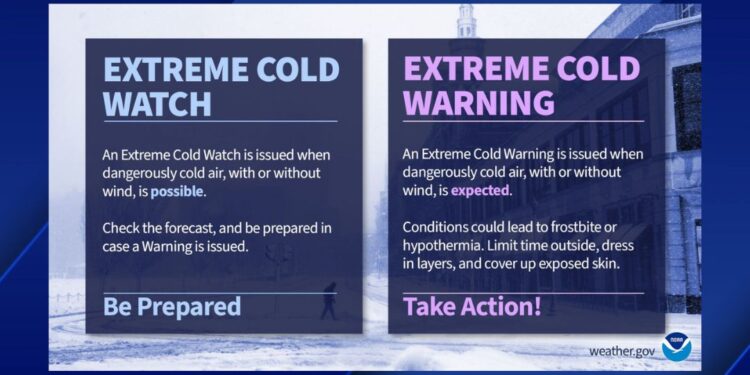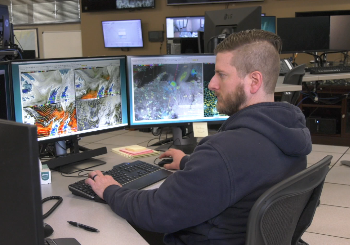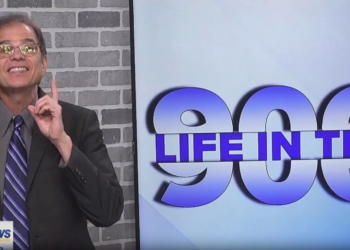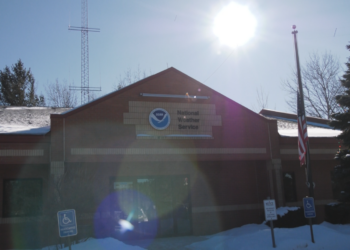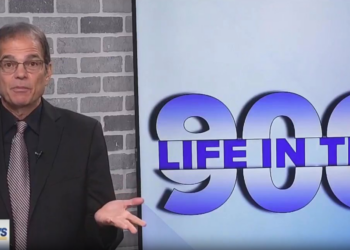UPPER PENINSULA, Mich. (WZMQ) – This winter, a new type of alert will be issued, replacing one that’s heard pretty often in the U.P. The National Weather Service is dropping the Wind Chill Watches, Warnings, and Advisories in favor of one that is more all-encompassing.
As of Oct. 1, the National Weather Service will now issue alerts for Extreme Cold instead.
“Cold is cold regardless of whether there is wind or not,” said Dan Thompson, the Science and Operations Officer at the National Weather Service Marquette office.
Thompson said the Extreme Cold alert will be issued on days with very low air temperature and no wind, to help keep people safe.
“In the past, we haven’t been able to issue a cold weather product when there was no wind, and it can be cold, weather can be hazardous, whether or not there’s wind,” said Thompson. “So, this change allows us to do that.”
It breaks down into three categories: Extreme Cold Watch, Extreme Cold Warning, and Cold Weather Advisory.
A Watch is issued when dangerous temperatures are possible. A Warning is issued when dangerous temperatures are expected.
“That’s the signal to try to limit the amount of time you spend outside and try to limit the amount of exposed skin that you have,” Thompson explained. “If we issue a Cold Weather Advisory, that usually means that you can get frostbite in as little as 30 minutes, and if it’s a warning, that’s a little more severe. That can be as little as 10 minutes.”
But wind chill isn’t going away. Thompson says you’ll still see it on your local forecasts.
“Wind dissipates heat from your body. We all know that– having experienced these cold, windy days– it feels a lot colder when you add wind in. So, wind chill is definitely still a factor,” he said.
As for what this winter could be like in the U.P.?
“Unfortunately, there’s not a lot of signal that tells us one way or another if it’s going to be a particularly cold or warm winter. Last winter we had a very strong El Niño, and that is usually correlated with very warm temperatures in the winter months. This year, we are the reverse of that, so we’re in a La Niña, but it doesn’t work out the same way in that it necessarily favors colder temperatures. So it’s going to depend on things that can’t be predicted on a seasonal basis,” explained Thompson. “But, one thing people can prepare for is just a colder and snowier winter than last year, because we think that last winter was quite an anomaly.”
Whether it’s cold– or really cold– get ready to bundle up soon!

